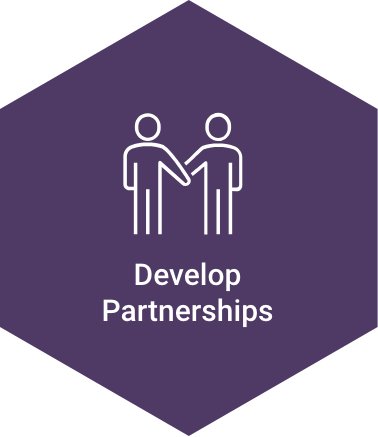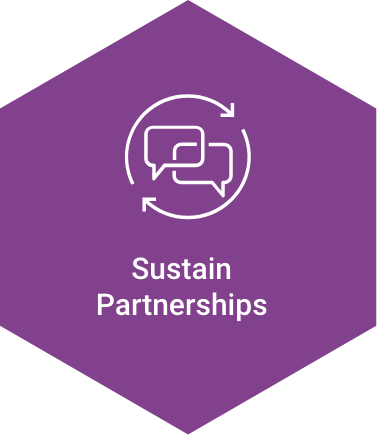- Identify Partners and Their Roles
-
All sectors have an important role in preventing multiple forms of violence. The best entity to convene and lead prevention efforts may differ based on variables such as resources, role, and expertise. There may be existing coalitions or groups that can serve as a foundation for building partnerships. It can be helpful to conduct an environmental scan early on in order to identify the key stakeholders, existing partnerships, and planning groups.
In each of the violence prevention Resources for Action, CDC identified the sectors especially well positioned to bring leadership and resources for specific violence prevention strategies and approaches. These sectors were identified based on the focus of each approach; however, other sectors may be instrumental in planning and implementation of specific policies, practices, and programs.
For more information about potential stakeholders involved in each approach, visit the Approach Search, or refer to the Sector Involvement sections in CDC’s violence prevention Resources for Action.
Partnerships: Engage Others in Preventing Violence
- Develop Partnerships
-
Consider the following when engaging partners to prevent violence:
- Once you have identified the purpose of the group, identify the sectors and key stakeholders who are important to include. Think outside of the typical entities that are engaged in violence prevention and consider organizations and individuals that will build a diverse group that can take action.
- Research potential stakeholders’ priorities to think of easy ways you can help them reach their goals.
- Consider the various risk and protective factors that you have prioritized and think about stakeholders who may have a joint interest in actions to impact those risk and protective factors – even if their primary goal is not focused on violence prevention.
- Work with partners to identify the shared vision of the partnership or workgroup early in the process.
- Understand and address barriers to participation and engagement. Recruit partners in ways that respect their time and effort, reflect an understanding of context, and build their capacity to act.
Visit the Prevention Institute’s Collaboration Multiplier, to identify joint strategies and shared outcomes that are in everyone’s interest.
See how Oregon developed key partnerships with youth.
See how Portland, OR, strengthened community relationships.
See how Wyoming benefitted from agency partnerships that focused on addressing violence.
See how the sheriff in Laurel County, KY, engaged unique partners to prevent child abuse.
For more information, download:
- Sustain Partnerships
-
The key to sustaining collaboration is to identify ways that partnerships provide a benefit to all who are involved. This is particularly important when engaging sectors that are not typically engaged in violence prevention.
Consider the following for sustaining partnerships:
- Refer often to the shared vision. A shared vision can remind partners to stay engaged, even when they disagree on some things.
- Periodically revisit goals, progress, and membership.
- Establish a clear and transparent communication process that keeps partners engaged.
- Celebrate accomplishments and share credit for success.
- Create group processes that establish trust and mutual respect within the group.
- Address and manage conflict by recognizing and resolving tension, power dynamics, and other difficulties before they erupt in damaging ways.
- Depending on the nature of the partnership or planning group, consider conducting a periodic evaluation or “check-in” to assess the strength of the partnership and collaboration.
For additional resources related to developing and sustaining multi-sector partnerships, visit SAMHSA’s Prevention Collaboration in Action Site
See how Breckenridge, MN, used shared values to enhance its violence prevention collaborative.
See how Douglas County, OR, engaged young people in creating violence prevention messages.
For more information, download:




